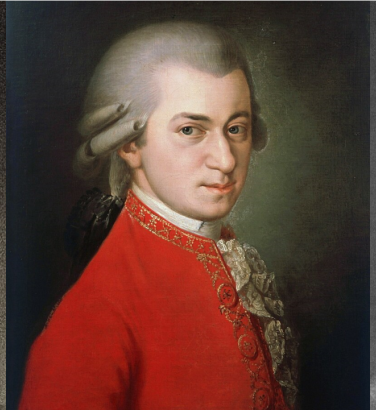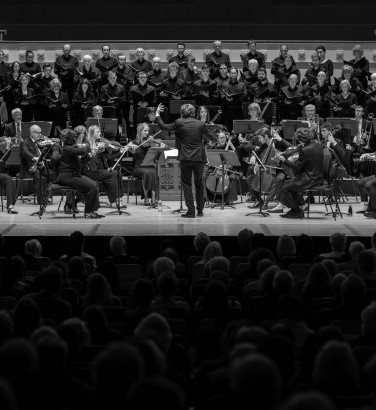
Beethoven's 'lesser' symphonies
27 Jan 2025
News Story
Portraits of the artist as an increasingly disheveled man: Beethoven in 1803, 1815 and 1820
Take a poll of classical music lovers’ favourite Beethoven symphonies, and chances are the odd-numbered ones will figure very highly: the mighty Fifth and seismic Ninth would probably be fighting for first place, with the Eroica (No 3) and No 7 not far behind. His First would be rather further down the list – it’s somehow reassuring to know that even the great Beethoven didn’t quite pull off a classic on his first attempt – but where does that leave the even-numbered symphonies?
With the exception of the Pastoral (No 6), these have always tended to lag behind in terms of popularity. Put simply, the Fourth is a bit lightweight, No 8 is a strange beast that somehow looks backwards rather than forwards and as for the Second … well, it’s just not on a par with the Eroica – or so received wisdom would have us believe. These works don’t fit in as well with the popular perception of Beethoven as a defiant figure, heroic in the face of adversity, but to deny them their place in his oeuvre is at the risk of misunderstanding him.
The term flanderisation is used in modern culture to describe how a single element of someone’s personality is exaggerated to the point of becoming their defining trait. Originating from the character of Ned Flanders in The Simpsons, there is something of this in how Beethoven is perceived when viewed through the prism of the odd-numbered symphonies. The same might be said for Bach being appreciated as a musical intellectual, Haydn for his wit, Chopin for his delicacy … the list goes on and on.
So what do the even-numbered symphonies tell us about Beethoven? Let’s look at them in chronological order.
Given the stylistic gulf that separates Beethoven’s First from his Third, it’s reasonable to consider the Second a stepping-stone between them, only it turns out to be much closer to the Eroica, both in scale and ambition. Early opinions on both works certainly point to this: the finale of the Second famously reminded one critic of “a wounded dragon, refusing to die while bleeding to death”, while the premiere of the Eroica reportedly had another crying out “I’d give another Kreutzer if only it would stop!” Symphonies on this scale were unprecedented at the time, and while the Eroica is obviously the better-known of the two, all the signs were already there in the Second.
It’s there from the very opening: the slow introduction is vastly expanded from that of the First Symphony, with much more opportunity for Beethoven to develop his musical ideas, and the work as a whole is liberally peppered with the sforzando markings (notes to be played with an especially strong accent, often against the prevailing beat) which would become a characteristic of Beethoven’s music. Leaving aside this purely musical content, however, perhaps the most remarkable fact about the Second Symphony is that it dates from a period when Beethoven was having increasing problems with his hearing. Less than six months later, he wrote of the suicidal despair to which this had driven him (in a document known to us as the Heiligenstadt Testament), yet the music of his Symphony No 2 is brimming with confidence.
I despair of giving an accurate impression of this prodigious music. [...] It is no longer rain and wind, it is a dreadful cataclysm, a universal deluge, the end of the world.
The Fourth - which the SCO performs along with Tchaikovsky Violin Concerto (6-7 March) - is sandwiched between two cornerstones of the symphonic repertoire, as a result of which it is typically defined by what it isn’t rather than on its own merits. Schumann deemed it “a slender Grecian maiden between two Norse gods”, which is picturesque but not especially helpful: it’s a verdict which has cast a long shadow on the way the Fourth has been perceived ever since, denying the music its power.
This is especially true when considering the Fourth as a sort of dry run for the Seventh. The structure of the two is strikingly similar, especially in their third movements: both start with a succession of cross-rhythms (almost designed to trip the unwary) before switching to a pastoral vein for their contrasting central sections. Come the final movements, their energy proves almost unstoppable: the notes of the main theme in the Seventh twist around a very compact centre, while the Fourth’s run of semiquavers rush back and forth to dizzying effect. There’s something of the classic Looney Tunes cartoons to its manic energy, with a series of off-beat sforzando chords all but pre-empting the sight of Wile E. Coyote smashing repeatedly into a cliff-face. It may not be deep or meaningful, but when it comes down to it, is the unfettered joy of the Seventh any different?
The Sixth (Pastoral) is the exception to the rule, a musical portrayal of Beethoven’s love of the countryside that is, by some margin, his most popular even-numbered symphony. That said, its relaxed mood means its innovations are often overlooked. Chief among these is the violent storm which forms a transition from the Scherzo into the Finale, creating a three-movement chain unprecedented in the genre. Beethoven had previously linked the Scherzo and Finale in his Fifth Symphony (marking the point when the dark tensions of the work give way to blazing triumph), and although he pushes the process slightly further here, the nature-loving composer of the Pastoral, relaxing by a quiet brook, seems rather at odds with the way he is generally regarded.
The Eighth Symphony sees the return of the jovial composer previously encountered in No 4, but one who appears to be enjoying a private joke, one he never fully explains. The presence of a rogue note in the Finale, played repeatedly (and loudly), as if to emphasise how foreign it is to the home key, is the clearest indication of this, but there is a sense of irony to the work as a whole. There is another puzzle in the two middle movements: a slow movement that’s frankly a bit on the fast side, followed by a stately Minuet where audiences had come to expect a quicker Scherzo. While it wasn’t unheard of for these central movements to be swapped around, what Beethoven does here is a much more subversive blurring of the lines: the supposedly slow movement is even marked to be played ‘scherzando’, i.e. in the manner of a scherzo.
Beethoven himself is supposed to have accounted for the Eighth's lack of popularity (compared to the Seventh) by dint of its being a superior work. On that basis, the time is surely right for a reassessment of all these supposedly lesser symphonies: besides the many musical joys to be found in them, they can only help us get to know this multi-facetted artist better.

Tchaikovsky Violin Concerto
Join us for Tchaikovsky's Violin Concerto with one of the most dazzling violinists of her generation, Alena Baeva.
Related Stories
![Three men, the first two in 18th century formal dress (one in black and white, one in a red coat), the last in an old photo, smoking]()
What is a sinfonia concertante?
17 March 2025
We delve into the history of a hybrid genre ...![]()
The SCO Chorus on music for Lent
10 March 2025
With Easter just around the corner, we delve into perhaps the richest (and often darkest) choral repertoire of all ...![]()
The bassoon concerto
3 March 2025
For the last article in our concerto series (for now), we turn to an instrument too often dismissed as the orchestra's resident joker.


